The largest and heaviest birds – Top 10
Birds are among the most diverse and fascinating animals on Earth. They can fly, sing, migrate, and adapt to a variety of habitats. Some birds are also remarkably large and heavy, rivaling or even surpassing some mammals in size. In this article, we will explore the top 10 largest and heaviest birds in the world, based on their average body mass and wingspan. We will also learn about their behavior, diet, distribution, and conservation status. Whether you are a bird lover or just curious about these feathered giants, you will surely enjoy this journey into the world of the biggest birds.
The following list contains the heaviest living birds. Most of them are flightless. Flightless birds comprise less than 2% of all living bird species. On the list are four flying species, the Dalmatian pelican, Great bustard, Kori bustard and Trumpeter swan.
The biggest & heaviest living birds – Top 10

13. Dalmatian pelican (Pelecanus crispus) – 15 kg (33.1 lb)
- Length: 160 to 183 cm (5 ft 3 in to 6 ft 0 in)
- Wingspan: 290–345 cm (9 ft 6 in–11 ft 4 in)
- Mass: 7.25–15 kg (16.0–33.1 lb)
The Dalmatian Pelican (Pelecanus crispus) is a species of pelican that is native to parts of Europe, Asia, and Africa. It is the largest species of pelican, with a wingspan of up to 3.5 meters (11.5 feet) and a body length of up to 1.8 meters (6 feet). It is named for its distinctive, white-colored head and neck, which is adorned with long, black feathers.
The Dalmatian Pelican is a large, waterbird that feeds on a variety of prey, including fish, amphibians, and crustaceans. It has a large, hooked beak that is used to scoop up prey from the water’s surface. It is a gregarious species and is often found in large flocks, particularly during the breeding season.
The Dalmatian Pelican is found in a variety of habitats, including shallow, freshwater lakes and marshes, as well as coastal lagoons and estuaries. It is classified as Vulnerable by the International Union for Conservation of Nature (IUCN) due to habitat loss and degradation, as well as overfishing and pollution. Populations of this species have declined significantly in recent years, and it is now considered to be at risk of extinction. Despite its vulnerability, the Dalmatian Pelican remains an important species in many of the ecosystems in which it occurs.
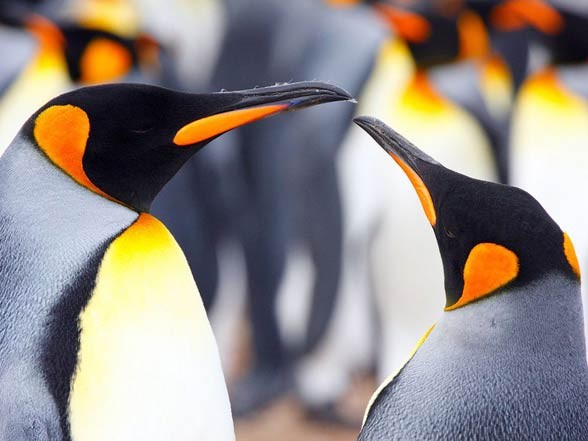
12. King penguin (Aptenodytes patagonicus) – 20 kg (44 lb)
- Height: male: 70–100 cm (2 ft 3.56 in–3 ft 3.37 in)
- Mass: male: 11 to 16 kg (24 to 35 lb); max 20 kg (44 lb)
The King Penguin (Aptenodytes patagonicus) is a species of penguin that is native to subantarctic regions of the Southern Hemisphere, including the South Atlantic, South Indian, and South Pacific Oceans. It is the second-largest species of penguin, with a body length of up to 90 cm (35 in) and a weight of up to 20 kg (44 lb). It is named for its distinctive, orange-yellow head and neck, which is adorned with long, black feathers.
The King Penguin is a medium-sized penguin that feeds on a variety of prey, including fish, squid, and krill. It has a strong, pointed beak that is used to catch and hold its prey. It is a gregarious species and is often found in large colonies, particularly during the breeding season.
The King Penguin is found in a variety of habitats, including rocky shores, cliffs, and islands. It is classified as Near Threatened by the International Union for Conservation of Nature (IUCN) due to habitat loss and degradation, as well as overfishing and pollution. Populations of this species have declined in some areas, but are stable or increasing in others. Despite its vulnerability, the King Penguin remains an important species in many of the ecosystems in which it occurs.
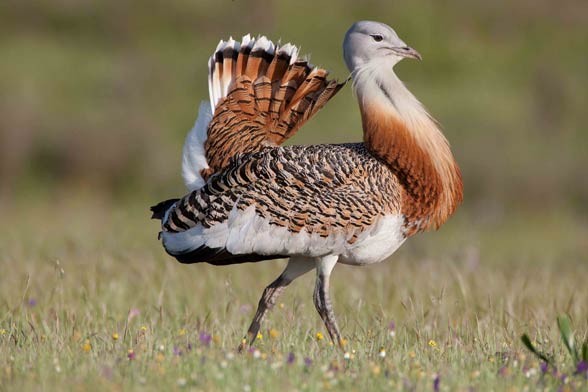
11. Great bustard (Otis tarda) – 21 kg (46 lb)
- Height:
- male: 90–105 cm (2 ft 11 in–3 ft 5 in)
- female: 75 to 85 cm (2 ft 6 in to 2 ft 9 in)
- Length:
- male: 115 cm (3 ft 9 in)
- female: 90 cm (2 ft 11 in)
- Wingspan:
- male: 2.1–2.7 m (6 ft 11 in–8 ft 10 in)
- female: 180 cm (5 ft 11 in)
- Mass:
- male: 5.8 to 18 kg (13 to 40 lb)
- max 21 kg (46 lb)
The Great Bustard (Otis tarda) is a species of large, ground-dwelling bird that is native to parts of Europe, Asia, and Africa. It is the heaviest flying bird in Europe, with a body length of up to 1.2 meters (4 feet) and a weight of up to 20 kg (44 lbs). It is named for its large size and distinctive appearance, which is characterized by a long, white neck and chest, a brown back and wings, and a short, black tail.
The Great Bustard is a omnivorous bird that feeds on a variety of plant and animal matter, including seeds, insects, and small mammals. It has a strong, pointed beak that is used to forage for food. It is a solitary species that is typically found in open, grassy habitats, such as fields, meadows, and steppes.
The Great Bustard is classified as Vulnerable by the International Union for Conservation of Nature (IUCN) due to habitat loss and degradation, as well as overhunting and collision with man-made structures. Populations of this species have declined significantly in recent years, and it is now considered to be at risk of extinction. Despite its vulnerability, the Great Bustard remains an important species in many of the ecosystems in which it occurs. It is also a popular target for birdwatchers and wildlife enthusiasts.
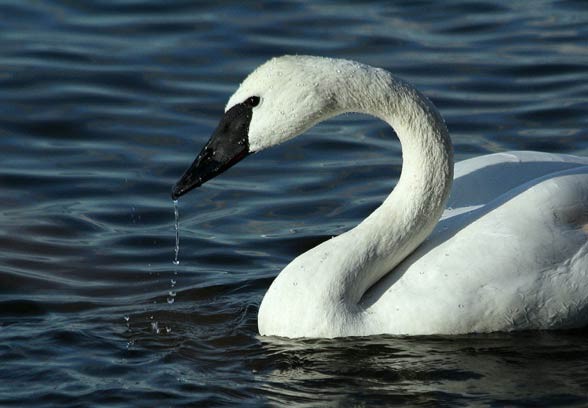
10. Trumpeter swan (Cygnus buccinator) – 23 kg (51 lb)
- Length:
- male: 138–180 cm (4 ft 6 in–5 ft 10 in)
- Wingspan:
- male: 1.85 to 3.1 m (6 ft 1 in to 10 ft 2 in)
- Mass:
- male: 7–13.6 kg (15–30 lb); max 23 kg (51 lb)
The Trumpeter Swan (Cygnus buccinator) is a species of large, waterbird that is native to parts of North America, including the United States, Canada, and Alaska. It is the largest species of swan in North America, with a wingspan of up to 2.7 meters (9 feet) and a body length of up to 1.5 meters (5 feet). It is named for its distinctive, loud, trumpet-like call, which can be heard over long distances.
The Trumpeter Swan is a carnivorous bird that feeds on a variety of prey, including fish, amphibians, insects, and aquatic plants. It has a large, curved beak that is used to catch and hold its prey. It is a gregarious species and is often found in large flocks, particularly during the breeding season.
The Trumpeter Swan is found in a variety of habitats, including shallow, freshwater lakes, marshes, and ponds. It is classified as Near Threatened by the International Union for Conservation of Nature (IUCN) due to habitat loss and degradation, as well as overhunting and pollution. Populations of this species have declined significantly in recent years, but have shown signs of recovery in some areas through conservation efforts. Despite its vulnerability, the Trumpeter Swan remains an important species in many of the ecosystems in which it occurs. It is also a popular target for birdwatchers and wildlife enthusiasts.
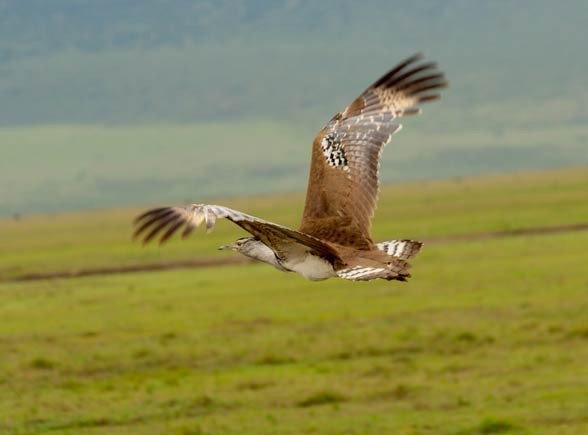
9. Kori bustard (Ardeotis kori) – 23 kg (51 lb)
- Height:
- male: 71–120 cm (2 ft 4 in–3 ft 11 in)
- female: 60 cm (2 ft 0 in)
- Length:
- male: 120 to 150 cm (3 ft 11 in to 4 ft 11 in)
- female: 80 to 120 cm (2 ft 7 in to 3 ft 11 in)
- Wingspan:
- male: 2.3 to 2.75 m (7 ft 7 in to 9 ft 0 in)
- 177 to 220 cm (5 ft 10 in to 7 ft 3 in)
- Mass:
- male: 7 and 18 kg (15 and 40 lb); max 23 kg (51 lb)
- female: 3 to 7 kg (6.6 to 15.4 lb)
The Kori Bustard (Ardeotis kori) is a species of large, ground-dwelling bird that is native to parts of Africa, including Ethiopia, Kenya, Tanzania, and South Africa. It is the heaviest flying bird in Africa, with a body length of up to 1.2 meters (4 feet) and a weight of up to 18 kg (40 lbs). It is named for its large size and distinctive appearance, which is characterized by a long, white neck and chest, a brown back and wings, and a short, black tail.
The Kori Bustard is an omnivorous bird that feeds on a variety of plant and animal matter, including seeds, insects, and small mammals. It has a strong, pointed beak that is used to forage for food. It is a solitary species that is typically found in open, grassy habitats, such as fields, savannas, and steppes.
The Kori Bustard is classified as Near Threatened by the International Union for Conservation of Nature (IUCN) due to habitat loss and degradation, as well as overhunting and persecution. Populations of this species have declined significantly in recent years, and it is now considered to be at risk of extinction.

8. Darwin’s rhea (Rhea pennata) – 28.6 kg (63 lb)
- Height:
- male: 90 to 100 cm (35–39 in)
- Length:
- male: 92 to 100 cm (36–39 in)
- Mass:
- male: 15 to 28.6 kg (33–63 lb)
Darwin’s Rhea (Rhea pennata) is a species of large, flightless bird that is native to parts of South America, including Argentina, Bolivia, Chile, and Peru. It is a member of the ratite family, which also includes ostriches, emus, and kiwis. It is named after Charles Darwin, who studied and collected specimens of this species during his travels in South America.
Darwin’s Rhea is a large, terrestrial bird that can grow up to 1.5 meters (5 feet) in height and weigh up to 25 kg (55 lbs). It has a long, slender neck, a small head, and long, strong legs that are adapted for running. It is brown or grey in color, with a white underside.
Darwin’s Rhea is an omnivorous bird that feeds on a variety of plant and animal matter, including seeds, fruits, insects, and small mammals. It has a strong, pointed beak that is used to forage for food. It is a gregarious species and is often found in large flocks, particularly during the breeding season.
Darwin’s Rhea is found in a variety of habitats, including grasslands, savannas, and open forests. It is classified as Near Threatened by the International Union for Conservation of Nature (IUCN) due to habitat loss and degradation, as well as overhunting and persecution. Populations of this species have declined significantly in recent years, and it is now considered to be at risk of extinction.
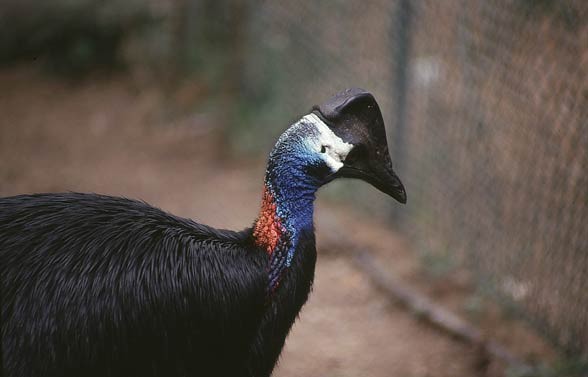
7. Dwarf cassowary (Casuarius bennetti) – 34 kg (75 lb)
- Height to the top of the head: 105 cm (3.4 ft)
- Height at shoulders:
- male: 80 cm (2 ft 7.5 in)
- Length:
- male: 99 and 150 cm (3.25 and 4.92 ft)
- Mass:
- male: 17.6 and 26 kg (39 and 57 lb), max 34 kg (75 lb)
The Dwarf Cassowary (Casuarius bennetti) is a species of small, flightless bird that is native to parts of New Guinea and nearby islands. It is a member of the ratite family, which also includes ostriches, emus, and kiwis. It is the smallest member of the cassowary family, with a body length of up to 1.3 meters (4.3 feet) and a weight of up to 15 kg (33 lbs).
The Dwarf Cassowary is a large, terrestrial bird that has a distinctive, casque (helmet-like structure) on its head, as well as a long, thin neck, a small head, and long, strong legs that are adapted for running. It is black in color, with a bright blue and red neck and head.
The Dwarf Cassowary is an omnivorous bird that feeds on a variety of plant and animal matter, including seeds, fruits, insects, and small mammals. It has a strong, pointed beak that is used to forage for food. It is a solitary species that is typically found in dense, tropical rainforests.
The Dwarf Cassowary is found in a variety of habitats, including rainforests, swamps, and mangroves. It is classified as Vulnerable by the International Union for Conservation of Nature (IUCN) due to habitat loss and degradation, as well as overhunting and persecution. Populations of this species have declined significantly in recent years, and it is now considered to be at risk of extinction.
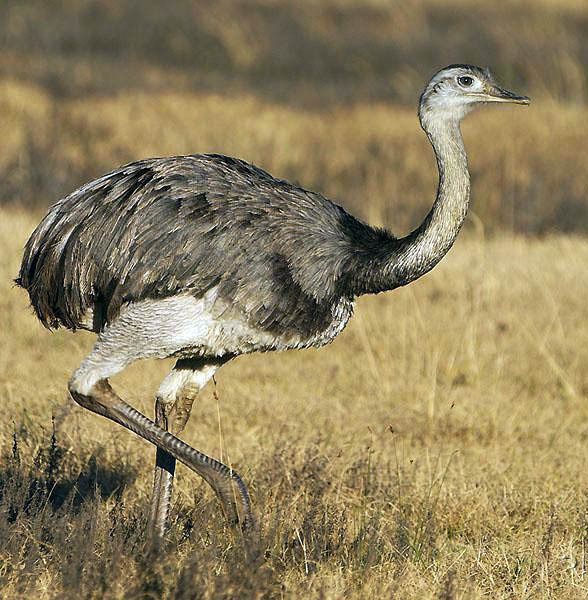
6. Greater rhea (Rhea americana) – 40 kg (88 lb)
- Height to the top of the head: male: 150 cm (4.9 ft). max 183 cm (6.0 ft)
- Length:
- male: 127 to 140 cm (50 to 55 in), max 150 cm (59 in)
- Mass:
- male: 20–27 kg (44–60 lb), max 40 kg (88 lb)
- male: 20–27 kg (44–60 lb), max 40 kg (88 lb)
The Greater Rhea (Rhea americana) is a species of large, flightless bird that is native to parts of South America, including Argentina, Bolivia, Brazil, Paraguay, and Uruguay. It is a member of the ratite family, which also includes ostriches, emus, and kiwis. It is the largest bird in South America, with a body length of up to 1.8 meters (5.9 feet) and a weight of up to 40 kg (88 lbs).
The Greater Rhea is a large, terrestrial bird that has a long, slender neck, a small head, and long, strong legs that are adapted for running. It is brown or grey in color, with a white underside.
The Greater Rhea is an omnivorous bird that feeds on a variety of plant and animal matter, including seeds, fruits, insects, and small mammals. It has a strong, pointed beak that is used to forage for food. It is a gregarious species and is often found in large flocks, particularly during the breeding season.
The Greater Rhea is found in a variety of habitats, including grasslands, savannas, and open forests. It is classified as Near Threatened by the International Union for Conservation of Nature (IUCN) due to habitat loss and degradation, as well as overhunting and persecution. Populations of this species have declined significantly in recent years, and it is now considered to be at risk of extinction.

5. Emperor penguin (Aptenodytes forsteri) – 45.4 kg (100 lb)
- Height to the top of the head:
- male: 110–130 cm (43–51 in)
- Mass: 22.7 to 45.4 kg (50 to 100 lb)
The Emperor Penguin (Aptenodytes forsteri) is a species of penguin that is native to Antarctica. It is the largest species of penguin, with a body length of up to 122 cm (48 in) and a weight of up to 40 kg (88 lbs). It is named for its distinctive, black and white plumage, which is adorned with a bright yellow patch on the head.
The Emperor Penguin is a carnivorous bird that feeds on a variety of prey, including fish, squid, and krill. It has a strong, pointed beak that is used to catch and hold its prey. It is a gregarious species and is often found in large colonies, particularly during the breeding season.
The Emperor Penguin is found in a variety of habitats, including ice shelves, pack ice, and open water. It is classified as Near Threatened by the International Union for Conservation of Nature (IUCN) due to habitat loss and degradation, as well as overfishing and pollution. Populations of this species have declined in some areas, but are stable or increasing in others.
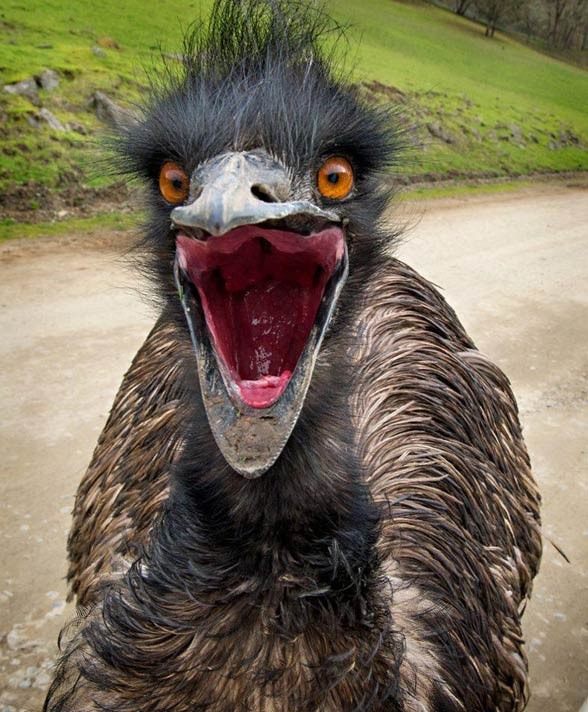
4. Emu (Dromaius novaehollandiae) – 70 kg (150 lb)
- Height to the top of the head:
- male: 139 to 164 cm (55 to 65 in), max 190 cm (6.2 ft)
- Height at shoulders: 100 to 130 cm (3.3–4.3 ft)
- Mass: 18 – 60 kg (40 to 132 lb), max 70 kg (150 lb)
- Females are usually larger than males
The Emu (Dromaius novaehollandiae) is a species of large, flightless bird that is native to Australia. It is a member of the ratite family, which also includes ostriches, rheas, and kiwis. It is the second-largest bird in the world, after the ostrich, with a body length of up to 2 meters (6.6 feet) and a weight of up to 45 kg (99 lbs).
The Emu is a large, terrestrial bird that has a long, slender neck, a small head, and long, strong legs that are adapted for running. It is brown in color, with a grey or black neck and head.
The Emu is an omnivorous bird that feeds on a variety of plant and animal matter, including seeds, fruits, insects, and small mammals. It has a strong, pointed beak that is used to forage for food. It is a gregarious species and is often found in large flocks, particularly during the breeding season.
The Emu is found in a variety of habitats, including grasslands, savannas, and open forests. It is classified as Least Concern by the International Union for Conservation of Nature (IUCN) due to its wide distribution and stable population.

3. Northern cassowary (Casuarius unappendiculatus) – 75 kg (170 lb)
- Height to the top of the head: 150–180 cm (4.9–5.9 ft)
- Length: 149 cm (4.89 ft)
- Mass:
- male: 30 to 37 kg (66 to 82 lb)
- female: 58 kg (128 lb), max 75 kg (170 lb)
The Northern Cassowary (Casuarius unappendiculatus) is a species of large, flightless bird that is native to parts of New Guinea and nearby islands. It is a member of the ratite family, which also includes ostriches, emus, and kiwis. It is the second-largest species of cassowary, with a body length of up to 1.8 meters (5.9 feet) and a weight of up to 50 kg (110 lbs).
The Northern Cassowary is a large, terrestrial bird that has a distinctive, casque (helmet-like structure) on its head, as well as a long, thin neck, a small head, and long, strong legs that are adapted for running. It is black in color, with a bright blue and red neck and head.
The Northern Cassowary is an omnivorous bird that feeds on a variety of plant and animal matter, including seeds, fruits, insects, and small mammals. It has a strong, pointed beak that is used to forage for food. It is a solitary species that is typically found in dense, tropical rainforests.
The Northern Cassowary is found in a variety of habitats, including rainforests, swamps, and mangroves. It is classified as Near Threatened by the International Union for Conservation of Nature (IUCN) due to habitat loss and degradation, as well as overhunting and persecution. Populations of this species have declined significantly in recent years, and it is now considered to be at risk of extinction.
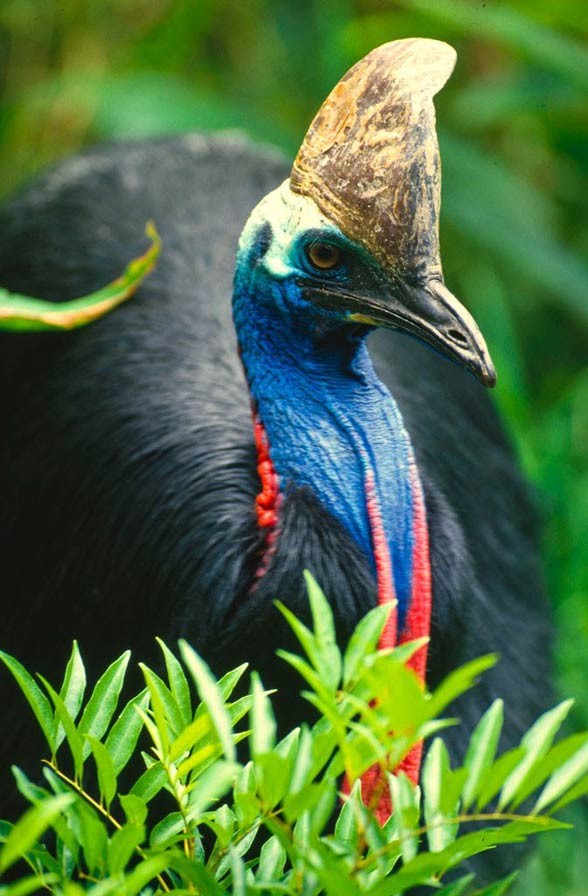
2. Southern cassowary (Casuarius casuarius) – 85 kg (187 lb)
- Height to the top of the head: 150 – 180 cm (4.9–5.9 ft); max 190 cm (75 in)
- Length: 127 to 170 cm (50–67 in)
- Mass:
- male: 29 to 34 kg (64–75 lb)
- female: 58.5 kg (129 lb), max 85 kg (187 lb)
The Southern Cassowary (Casuarius casuarius) is a species of large, flightless bird that is native to parts of New Guinea, Australia, and nearby islands. It is a member of the ratite family, which also includes ostriches, emus, and kiwis. It is the third-largest species of cassowary, with a body length of up to 1.5 meters (4.9 feet) and a weight of up to 40 kg (88 lbs).
The Southern Cassowary is a large, terrestrial bird that has a distinctive, casque (helmet-like structure) on its head, as well as a long, thin neck, a small head, and long, strong legs that are adapted for running. It is black in color, with a bright blue and red neck and head.
The Southern Cassowary is an omnivorous bird that feeds on a variety of plant and animal matter, including seeds, fruits, insects, and small mammals. It has a strong, pointed beak that is used to forage for food. It is a solitary species that is typically found in dense, tropical rainforests.
The Southern Cassowary is found in a variety of habitats, including rainforests, swamps, and mangroves. It is classified as Vulnerable by the International Union for Conservation of Nature (IUCN) due to habitat loss and degradation, as well as overhunting and persecution. Populations of this species have declined significantly in recent years, and it is now considered to be at risk of extinction.
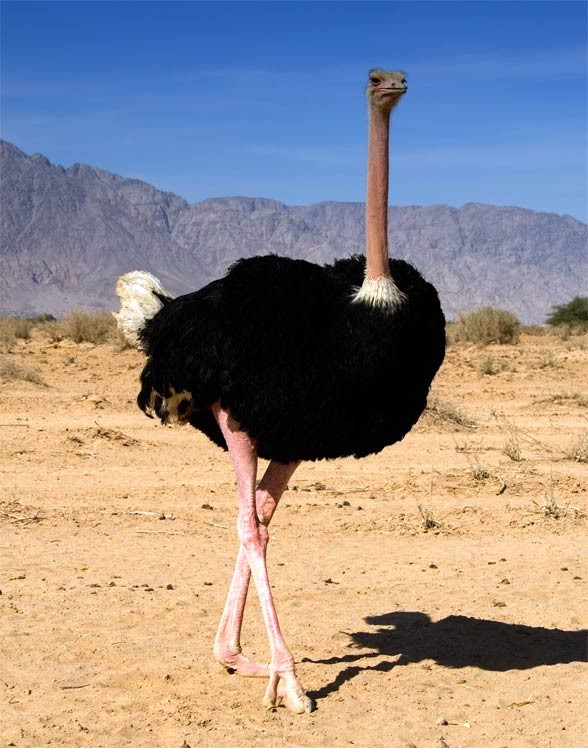
1. Common ostrich (Struthio camelus) – 156.8 kg (346 lb) – the largest and heaviest living bird
- Height to the top of the head:
- male: 210 to 280 cm (6 ft 11 in to 9 ft 2 in)
- female: 1.7 to 2.0 m (5 ft 7 in to 6 ft 7 in)
- Wingspan: 2 m (6 ft 7 in)
- Mass: 63 to 145 kilograms (139–320 lb)
- males average: 115 kg (254 lb) max 156.8 kg (346 lb)
- females average: 100 kg (220 lb)
The Common Ostrich (Struthio camelus) is a species of large, flightless bird that is native to parts of Africa. It is a member of the ratite family, which also includes emus, rheas, and kiwis. It is the largest bird in the world, with a body length of up to 2.7 meters (8.9 feet) and a weight of up to 150 kg (330 lbs).
The Common Ostrich is a large, terrestrial bird that has a long, slender neck, a small head, and long, strong legs that are adapted for running. It is covered in feathers that are brown or grey in color, with a white underside.
The Common Ostrich is an omnivorous bird that feeds on a variety of plant and animal matter, including seeds, fruits, insects, and small mammals. It has a strong, pointed beak that is used to forage for food. It is a gregarious species and is often found in large flocks, particularly during the breeding season.
The Common Ostrich is found in a variety of habitats, including grasslands, savannas, and open forests. It is classified as Least Concern by the International Union for Conservation of Nature (IUCN) due to its wide distribution and stable population.

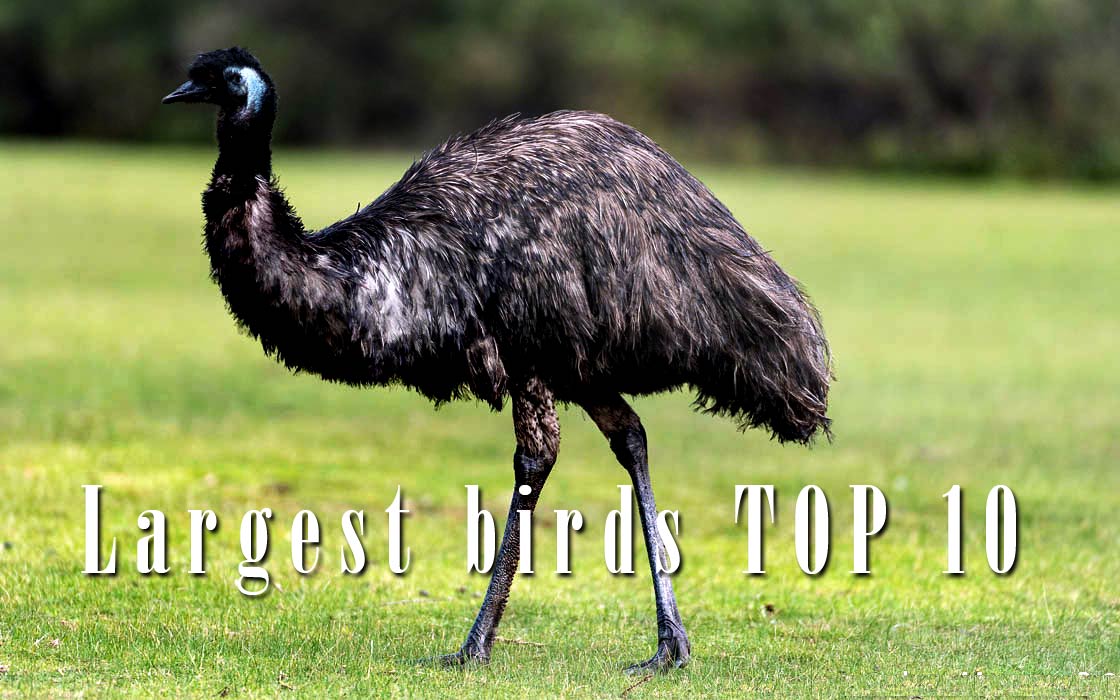






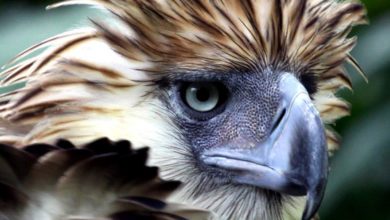

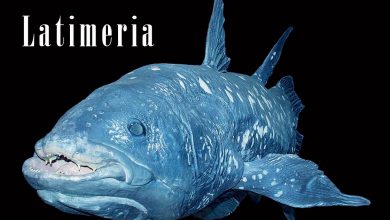


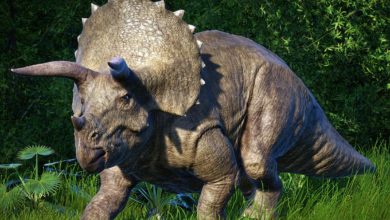




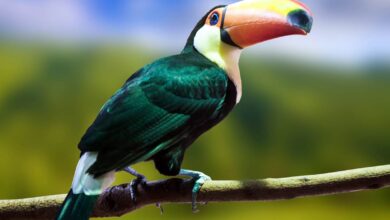
Great blog! It’s fascinating to learn about the largest and heaviest birds. I was particularly amazed by the sheer size of the ostrich and how it can run so fast despite its weight. The fact that the wandering albatross has the largest wingspan in the animal kingdom is mind-blowing too. It’s always intriguing to discover how these animals have adapted to their environments in such unique ways. Thanks for sharing this info, it was both educational and fun to read!